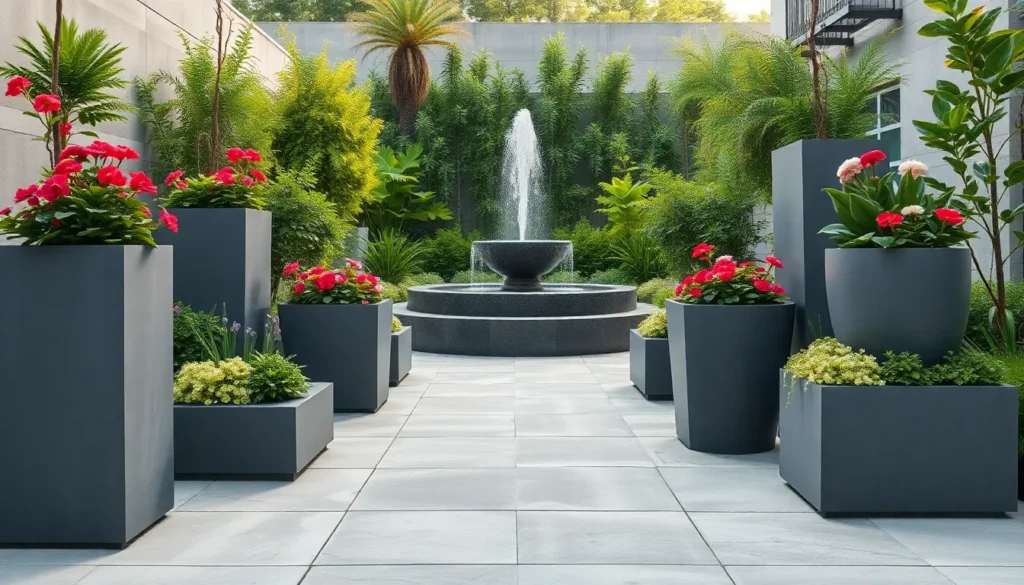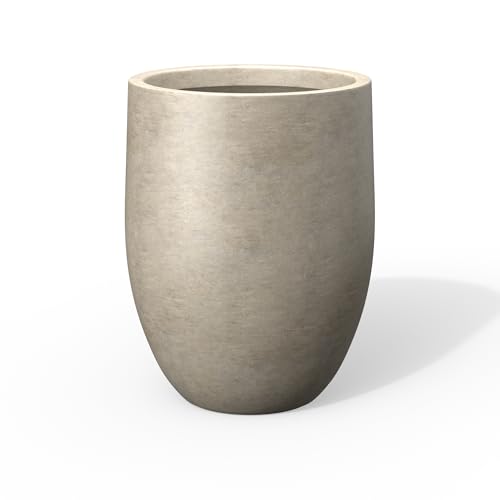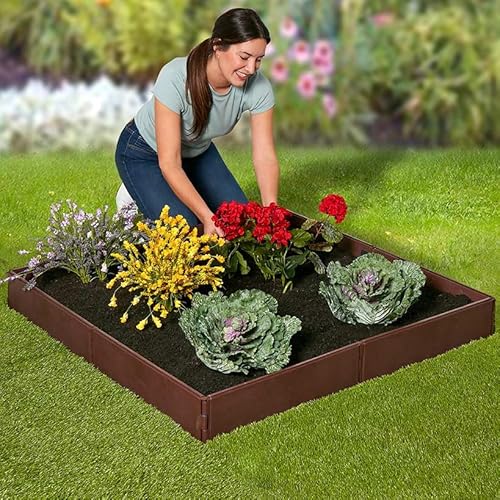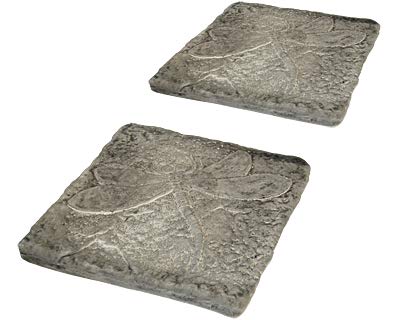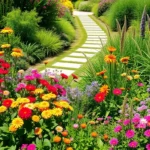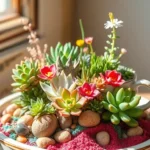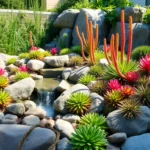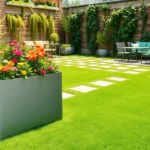We’ve all walked past those stunning concrete gardens that make us stop and stare – and now it’s time to create one of our own. Concrete isn’t just for driveways and sidewalks anymore; it’s become the secret weapon of creative gardeners who want to blend industrial chic with natural beauty.
From sleek planters that define modern spaces to sculptural elements that serve as conversation starters, concrete offers endless possibilities for transforming our outdoor areas. Whether we’re working with a small balcony or sprawling backyard, this versatile material lets us create unique features that’ll withstand weather while adding serious style points.
The best part? Most concrete garden projects don’t require professional skills or expensive tools. We’re about to explore dozens of creative ideas that’ll help us design stunning concrete features that perfectly complement our plants and reflect our personal style.
Create Modern Concrete Planters for Contemporary Appeal
Modern concrete planters offer the perfect solution for transforming any outdoor space into a sleek, contemporary garden retreat. These versatile containers combine durability with sophisticated design elements that complement today’s architectural trends.
Geometric Shapes and Clean Lines
Rectangular concrete planters deliver instant sophistication to modern landscapes with their crisp edges and minimalist appeal. We recommend creating square boxes measuring 24 inches on each side for optimal plant growth and visual impact. Cylindrical planters work exceptionally well for showcasing tall grasses like fountain grass or ornamental bamboo.
Triangular planters add ever-changing visual interest when clustered in groups of three or five. Hexagonal shapes create stunning honeycomb patterns when arranged together along pathways or patio edges. Diamond shaped containers provide unique focal points that draw the eye upward, making them perfect for corner installations.
Large-Scale Statement Pieces
Oversized concrete planters measuring 4 feet by 2 feet serve as dramatic centerpieces that anchor entire garden designs. These substantial containers accommodate small trees like Japanese maples or olive trees while creating impressive architectural elements. We’ve found that planters exceeding 3 feet in height work best for screening unsightly areas or creating privacy barriers.
Massive circular planters spanning 5 feet in diameter transform courtyards and entryways into grand welcoming spaces. Extra large rectangular planters stretching 8 feet long create living walls when filled with cascading plants or structured hedging. These statement pieces require reinforcement with rebar or wire mesh to prevent cracking under their considerable weight.
Tiered Planting Systems
Multi level concrete planters maximize growing space while creating stunning vertical displays that showcase different plant varieties. Three tier systems work perfectly for herb gardens, allowing easy access to frequently used plants like basil, oregano, and thyme. We suggest building each tier 8 inches apart to provide adequate growing room and visual separation.
Stepped concrete planters create natural amphitheater effects that highlight colorful flowers or seasonal displays. Cascading designs with 4 to 6 levels accommodate everything from trailing petunias to structured succulents. These systems drain naturally when properly constructed, preventing water accumulation that could damage plant roots or compromise the concrete structure.
Build Concrete Garden Paths and Walkways
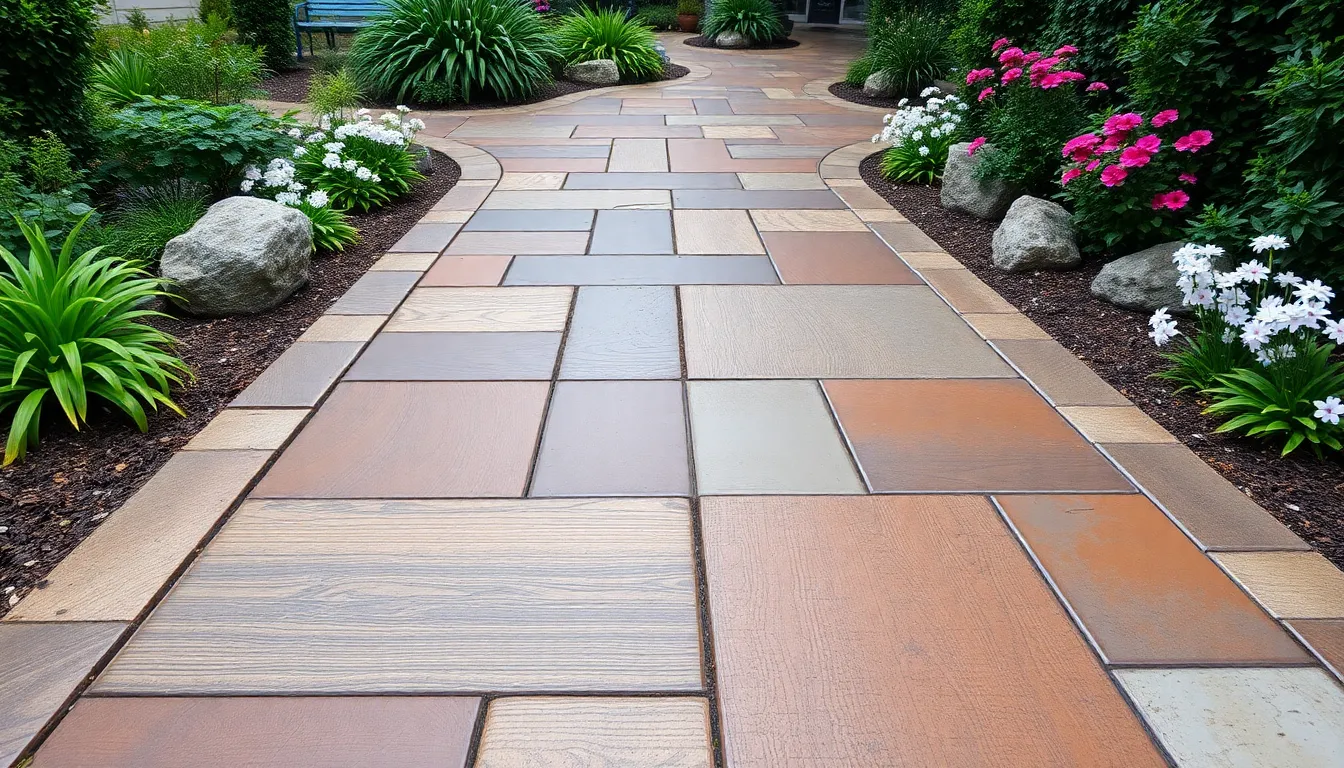
After creating stunning planters and vertical features, we can transform our garden’s flow and accessibility with purposeful concrete pathways. These walkways serve as the backbone of garden design while providing practical navigation through our outdoor spaces.
Stamped Concrete Designs
Stamped concrete paths offer us the perfect opportunity to mimic expensive natural materials at a fraction of the cost. We can achieve wood grain patterns that blend seamlessly with natural landscaping elements, creating an organic feel throughout our garden design. Stone patterns provide timeless elegance and work exceptionally well in both modern and traditional garden settings.
Brick stamp designs deliver classic charm while maintaining the durability concrete provides. Custom stamps allow us to incorporate unique elements like leaf patterns or floral motifs that reflect our personal garden theme. Intricate details become conversation starters when we use specialized stamps to add texture and visual depth to otherwise plain concrete surfaces.
Exposed Aggregate Finishes
Polished aggregate finishes create smooth, refined walkways that showcase beautiful pebbles and stones embedded within the concrete. We achieve this luxurious look by exposing the aggregate materials after pouring, then polishing the surface to reveal the natural beauty beneath. This technique works particularly well for main garden pathways where we want to make a sophisticated impression.
Rough aggregate textures provide excellent slip resistance for areas prone to moisture or steep inclines. These finishes maintain their rustic character while offering practical benefits for garden safety. We can select exact aggregate materials like river rocks, granite chips, or recycled glass to match our garden’s color palette and overall aesthetic vision.
Decorative Border Treatments
Mosaic borders transform ordinary concrete paths into artistic masterpieces using small pieces of colored concrete, tile, or natural stone. We can create geometric patterns, flowing curves, or nature inspired designs that frame our walkways beautifully. These decorative elements work especially well at path intersections or entry points where we want to create visual focal points.
Decorative edging materials like brick strips, metal borders, or natural stone define our concrete pathways while preventing edge deterioration. Metal edging provides clean, contemporary lines that complement modern garden designs perfectly. Brick and stone edging options blend traditional materials with concrete functionality, creating seamless transitions between different garden zones.
Install Concrete Water Features for Tranquil Ambiance
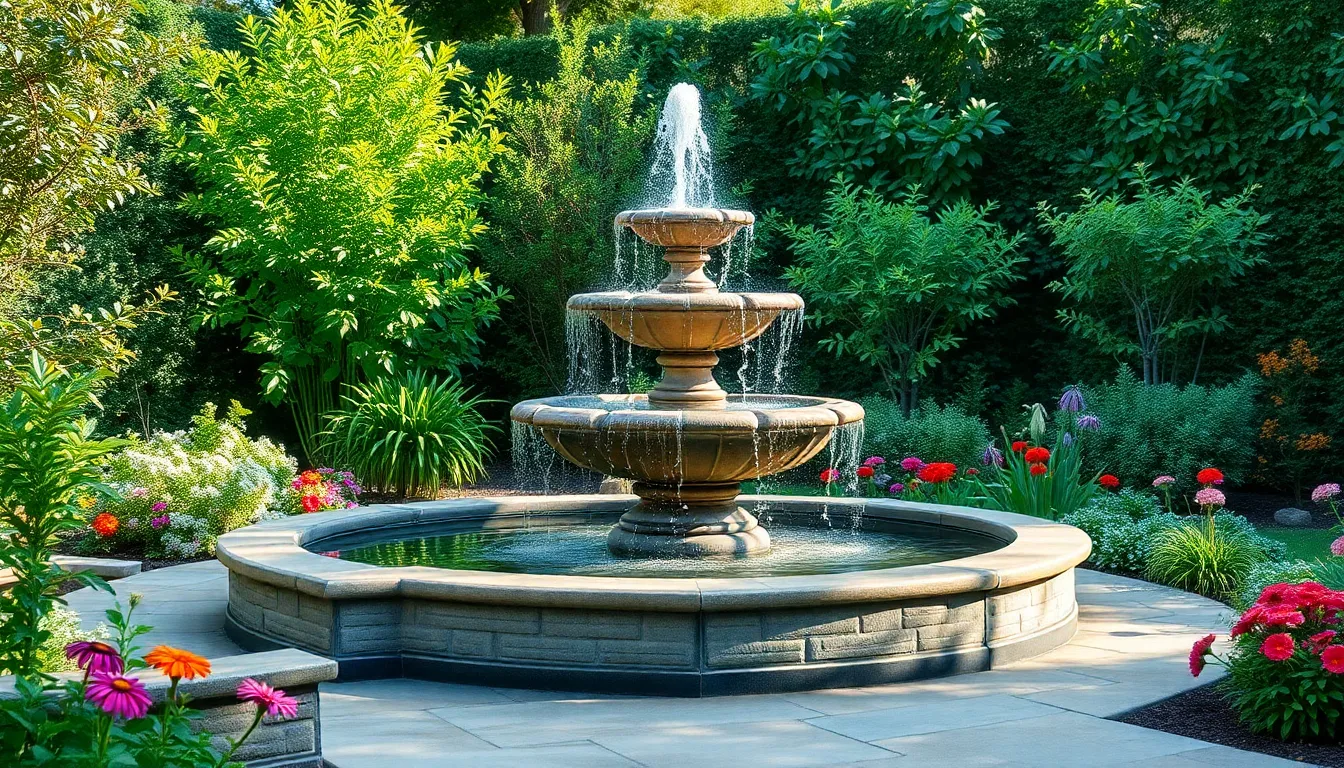
Water features bring a calming presence to any concrete garden design, transforming your outdoor space into a peaceful retreat. We’ll explore various concrete water feature options that combine durability with stunning visual appeal.
Modern Fountain Designs
Cast stone fountains offer exceptional durability through their special concrete and fiberglass construction, providing long-lasting performance that withstands weather extremes. These fountains often feature splash-resistant technology, making them ideal for families with young children or pets who enjoy playing near water.
Tiered garden fountains create elegant focal points with their multiple level design, adding both visual depth and soothing water sounds to your concrete garden. Each tier allows water to cascade gracefully from one level to the next, producing a mesmerizing effect that draws the eye upward.
Wall garden fountains maximize space efficiency by mounting directly onto concrete walls or existing structures, perfect for smaller gardens where ground space is limited. These vertical water features serve as stunning backdrops while maintaining the clean lines that complement modern concrete garden aesthetics.
Hand-built fountains provide unique customization opportunities, as skilled artisans create personalized designs using various materials alongside concrete elements. This approach ensures your water feature becomes a one-of-a-kind centerpiece that reflects your individual style preferences.
Reflecting Pool Options
Concrete paver surrounds enhance reflecting pools by creating beautiful and durable borders that complement the overall garden design. We recommend using these pavers to establish clean lines around your reflecting pool while providing stable walking surfaces for maintenance access.
Geometric concrete pools offer modern sophistication through their angular shapes and minimalist design approach, creating mirror-like surfaces that reflect surrounding plants and sky. These pools work particularly well in contemporary concrete gardens where clean architectural lines dominate the industry.
Cascading Water Elements
Cascading fountains use gravity to move water from upper levels to lower basins, creating continuous movement that produces relaxing sounds throughout your garden space. This flowing water effect adds ever-changing energy while maintaining the serene atmosphere that makes concrete gardens so appealing.
Water features with steps incorporate ledges and terraced levels to control water flow, allowing you to customize the cascading effect based on your garden’s exact layout and size requirements. These stepped designs create visual interest while providing multiple viewing angles for enjoying the water’s movement.
Construct Concrete Seating Areas and Benches
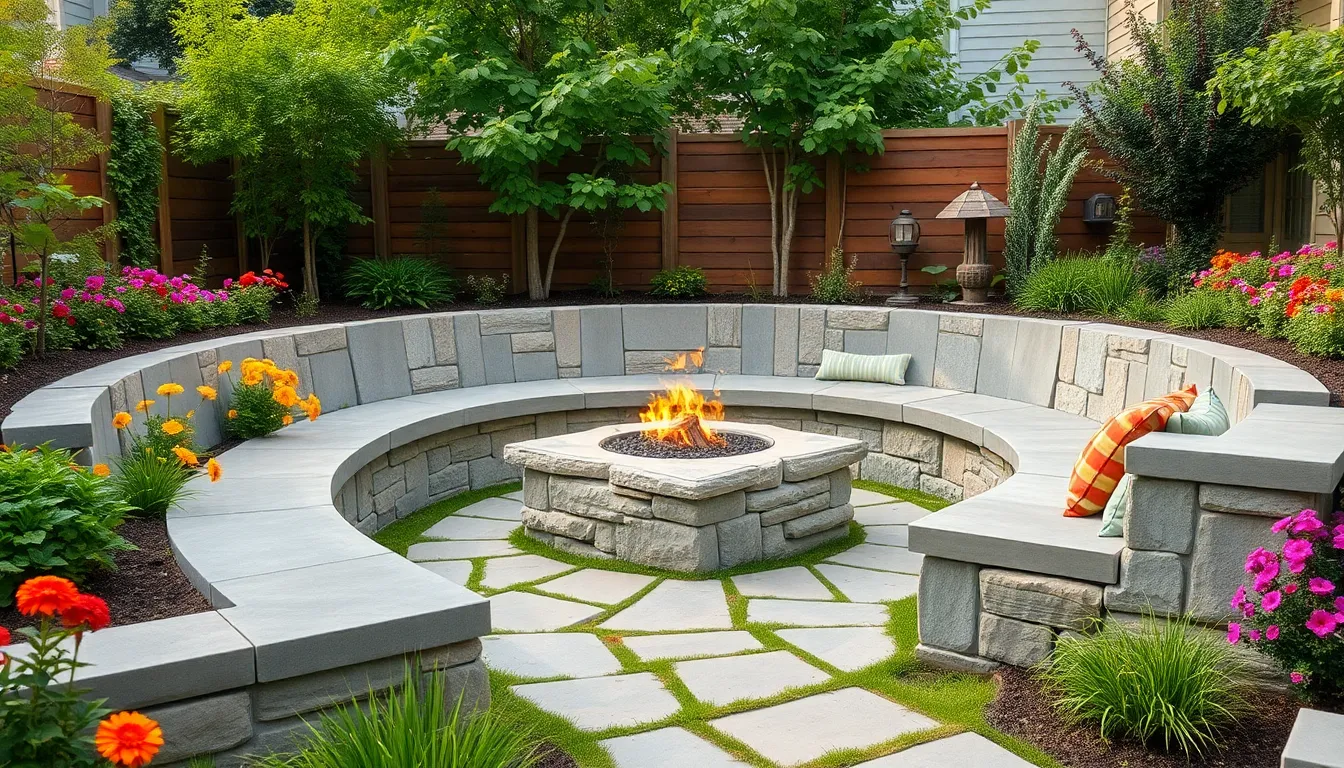
Concrete seating transforms gardens into inviting gathering spaces where family and friends can relax and enjoy the outdoors. We’ll explore three essential designs that combine comfort with durability.
Built-In Garden Benches
Built-in garden benches integrate seamlessly into walls or existing structures, creating permanent seating answers that complement your concrete garden design. These benches can be designed to match surrounding garden decor, often featuring natural materials like stone or wood accents that soften the industrial concrete aesthetic.
We recommend positioning these benches along garden walls or incorporating them into raised planter designs for maximum functionality. The integrated approach eliminates the need for separate furniture while providing weather-resistant seating that requires minimal maintenance. Stone accents can be added to the concrete surface to create visual texture, while wooden elements provide comfortable backrests or armrests.
Construction involves forming the bench directly into existing concrete structures or building them as extensions of garden walls. This method ensures structural stability and creates a cohesive design throughout your concrete garden space.
Curved Seating Walls
Curved seating walls create cozy, intimate atmospheres within garden spaces while defining different functional areas. The curved shape helps establish distinct zones such as reading nooks or dining areas, making your concrete garden more versatile and inviting.
These flowing designs soften the angular nature of concrete elements while providing comfortable seating for multiple people. We suggest incorporating curved walls around fire pits, water features, or central garden focal points to enhance the gathering experience. The organic shape contrasts beautifully with straight pathways and rectangular planters, adding visual interest to your overall design.
Planning curved seating requires careful consideration of radius and height to ensure comfortable seating positions. Most curved walls function best at 18 to 20 inches in height, providing optimal seating comfort while maintaining an open feel throughout the garden space.
Multi-Level Terraced Seating
Multi-level terraced seating involves creating multiple levels of seating areas using concrete pavers or slabs, maximizing functionality across sloped or varied terrain. Each level can be planted with different types of vegetation or designated for exact purposes such as dining or relaxation.
This design approach works particularly well in gardens with natural slopes or where you want to create distinct entertainment zones. We can incorporate different concrete finishes on each level, using smooth surfaces for dining areas and textured finishes for casual seating spaces. The terraced structure also provides excellent drainage and prevents erosion in sloped garden areas.
Plant selection becomes crucial in terraced designs, with each level offering opportunities for different growing conditions. Upper levels suit drought-tolerant plants like succulents, while lower levels can accommodate plants requiring more moisture. This variation creates visual depth and seasonal interest throughout your concrete garden design.
Design Concrete Raised Garden Beds
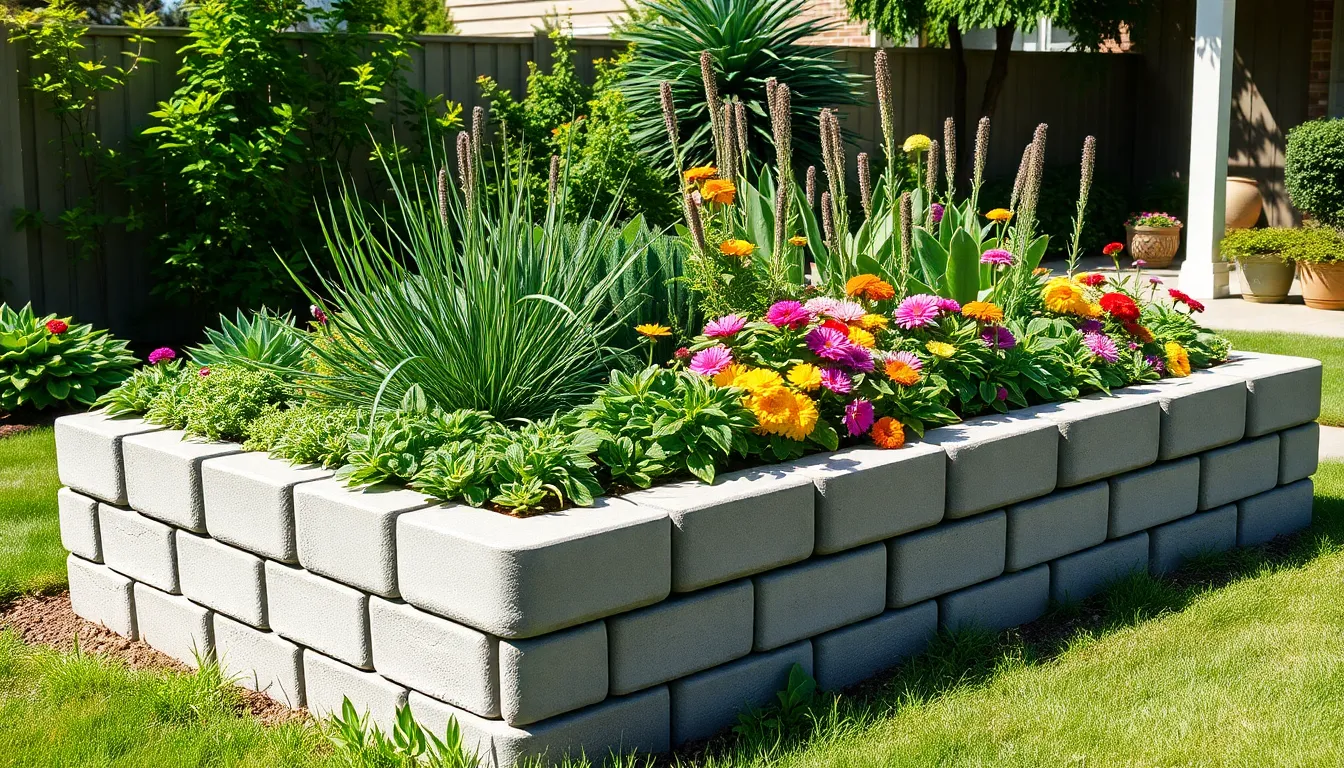
Concrete raised garden beds offer exceptional durability and design flexibility that transforms any outdoor space into an organized growing area. We’ll explore three proven approaches that make concrete gardening both practical and visually stunning.
Modular Block Systems
Interlocking blocks create the foundation for easy installation and long-term maintenance in concrete raised garden beds. These versatile components snap together without requiring mortar or specialized tools, making them perfect for DIY enthusiasts who want professional results. Customization becomes effortless when you arrange blocks to fit various garden layouts, from simple rectangles to curved designs that follow your industry’s natural contours.
Versatility shines through as modular systems accommodate different plants and garden styles, whether you’re growing herbs in compact spaces or creating expansive vegetable plots. The uniform block structure ensures consistent soil depth while allowing for future modifications as your gardening needs evolve.
Poured Concrete Borders
Smooth finishes deliver uniform aesthetic appeal that elevates your garden’s visual impact through clean, continuous lines. Poured concrete borders eliminate the gaps and inconsistencies common in other materials, creating seamless edges that define planting areas with precision. Durability stands unmatched as poured concrete provides long-lasting garden borders that resist weather, pests, and soil pressure for decades.
Integration flows naturally when poured borders blend with other garden features like paths and patios, creating a cohesive design throughout your outdoor space. The continuous nature of poured concrete allows for custom curves and angles that complement your garden’s unique character.
Integrated Drainage Answers
Drainage channels prevent waterlogging by incorporating built-in water management directly into your concrete garden bed design. These strategic channels direct excess water away from plant roots while maintaining the structural integrity of your concrete borders. French drains efficiently manage water flow by creating underground pathways that channel moisture to appropriate drainage areas.
Permeable options improve drainage through specialized concrete mixes that allow water to pass through the material itself, reducing surface runoff while maintaining structural strength. This approach proves especially valuable in areas with heavy rainfall or clay soils that retain moisture.
Add Concrete Garden Art and Sculptures
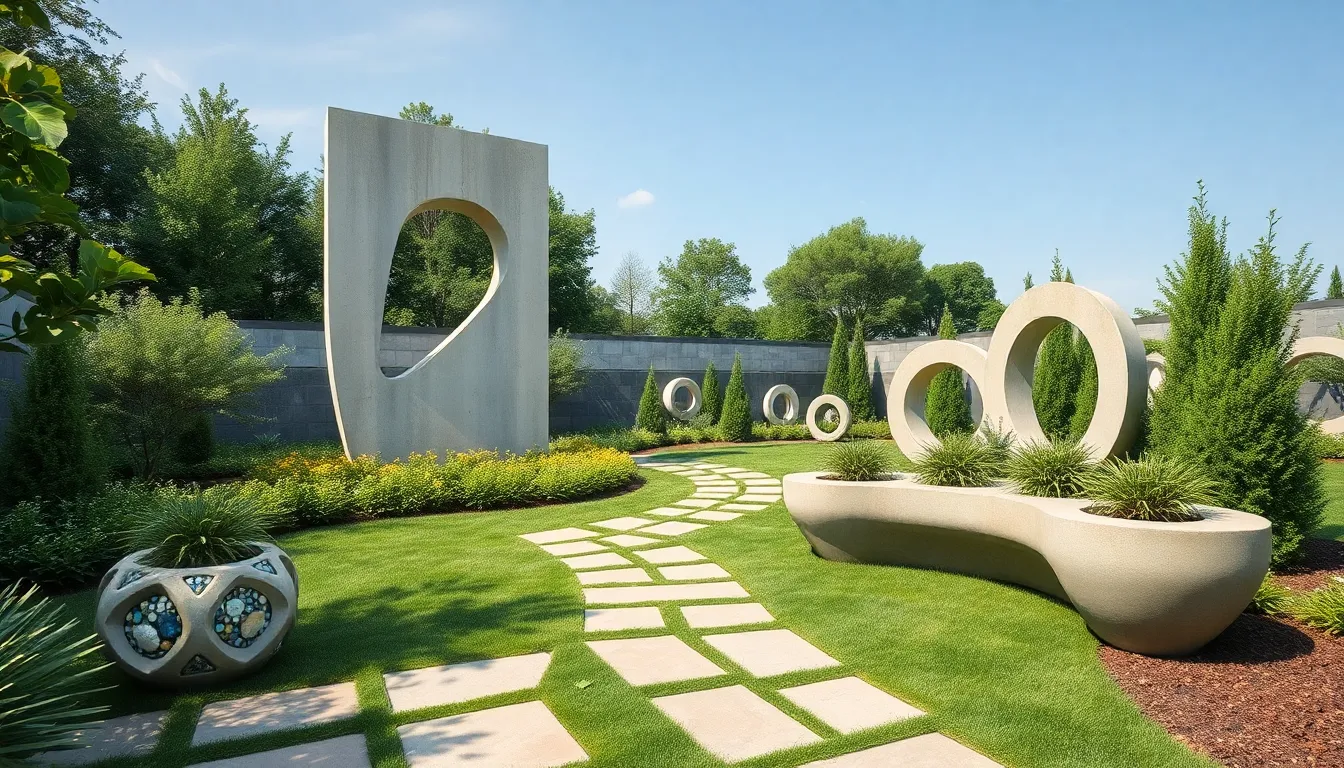
Sculptural elements transform ordinary concrete gardens into extraordinary artistic spaces that capture attention and inspire conversation. We’ll explore how strategic placement of concrete art pieces creates focal points that enhance your garden’s visual impact.
Abstract Modern Pieces
Geometric concrete sculptures bring contemporary sophistication to traditional garden settings. We recommend positioning angular forms like cubes, pyramids, and spheres throughout your industry to create visual rhythm and modern appeal. Fluid concrete sculptures offer organic counterpoints to structured plantings, with wave-like forms and curved elements that complement natural foliage patterns.
Large-scale abstract installations serve as dramatic centerpieces that anchor entire garden sections. We’ve found that positioning these statement pieces at pathway intersections or garden corners maximizes their visual impact while creating natural gathering points. Smaller abstract elements work beautifully when clustered in odd-numbered groupings, following design principles that create pleasing visual arrangements.
Functional Art Elements
Concrete benches double as sculptural statements while providing essential seating throughout your garden space. We design these pieces with built-in planters that seamlessly blend functionality with artistic expression, creating integrated features that serve multiple purposes. Curved bench designs follow natural industry contours while adding organic sculptural elements to geometric concrete themes.
Artistic concrete planters elevate ordinary container gardening into museum-worthy displays. We create these pieces with varying heights, textures, and shapes that create ever-changing visual compositions when grouped together. Fountain sculptures combine water features with artistic expression, producing soothing sounds while serving as stunning focal points that draw visitors deeper into your garden space.
Custom Mosaic Inlays
Mosaic patterns embedded within concrete sculptures create personalized artistic statements that reflect your unique style preferences. We incorporate glass tiles, natural stones, and ceramic pieces into concrete surfaces to produce colorful designs that catch sunlight throughout the day. These custom inlays transform simple concrete forms into intricate artworks that showcase craftsmanship and creativity.
Pathway sculptures featuring mosaic inlays guide visitors through your garden while providing artistic waypoints along the journey. We design these elements to complement surrounding plantings while maintaining visual coherence with your overall garden theme. Memorial or commemorative mosaic designs offer meaningful ways to personalize your concrete garden art, creating lasting tributes that blend seamlessly with natural surroundings.
Create Concrete Fire Features and Outdoor Kitchens
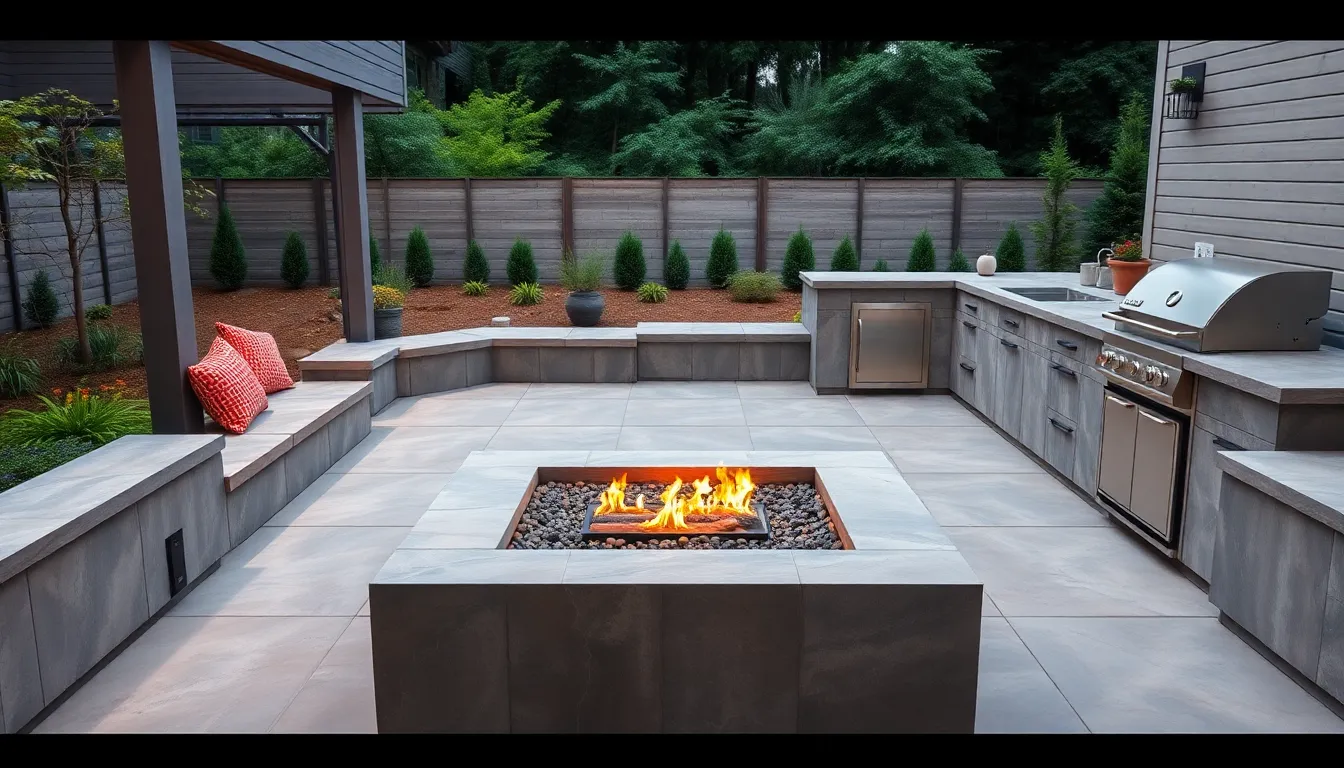
Transform your concrete garden into an entertainment hub by adding functional fire features and cooking spaces. These elements create natural gathering points while extending your outdoor living season.
Fire Pit Designs
Circular concrete fire pits offer timeless appeal and encourage intimate conversations around their warm glow. We recommend building these with thick concrete walls that retain heat efficiently and withstand temperature fluctuations throughout the seasons.
Rectangular fire pit designs provide modern sophistication while accommodating more seating arrangements for larger gatherings. Custom dimensions allow you to match existing concrete features like patios or retaining walls for seamless integration.
Elevated fire bowl structures create dramatic focal points by raising the flames above ground level on concrete pedestals. This design approach improves visibility from multiple angles while protecting surrounding concrete surfaces from heat damage.
Integrated seating walls surrounding fire pits maximize functionality by combining warmth with comfortable perching spots. Building these concrete benches at standard height provides convenient seating without requiring additional furniture purchases.
Built-In Barbecue Areas
Concrete grill stations create permanent outdoor cooking facilities that rival indoor kitchen capabilities. We suggest incorporating heat resistant materials like fire bricks within concrete surrounds to protect the structure from high temperatures.
Multi level cooking surfaces accommodate different grilling needs simultaneously by building stepped concrete platforms at varying heights. This design allows for both direct grilling and indirect cooking methods within the same station.
Storage compartments built into concrete barbecue areas keep cooking tools and supplies organized while protecting them from weather exposure. Design these spaces with proper drainage to prevent water accumulation during rainy seasons.
Side prep areas extending from main grill structures provide essential workspace for food preparation and plating. Smooth concrete surfaces make cleaning easy while offering durability that withstands daily outdoor use.
Outdoor Counter Spaces
Concrete countertops in outdoor kitchens deliver exceptional durability while maintaining consistent aesthetic appeal with other concrete garden elements. These surfaces resist stains, scratches, and weather damage better than most traditional materials.
Bar height serving areas create casual dining spaces that encourage social interaction during outdoor gatherings. Extending these concrete counters creates comfortable standing areas for guests while keeping food preparation separate.
Integrated sink installations within concrete counters provide convenient cleanup stations for outdoor cooking and entertaining. Proper plumbing and drainage planning ensures these features function reliably throughout different weather conditions.
Decorative edge treatments on concrete countertops add refined finishing touches that elevate the overall design quality. Options include rounded bullnose edges, beveled profiles, or exposed aggregate surfaces that complement surrounding concrete features.
Incorporate Concrete Retaining Walls and Terracing
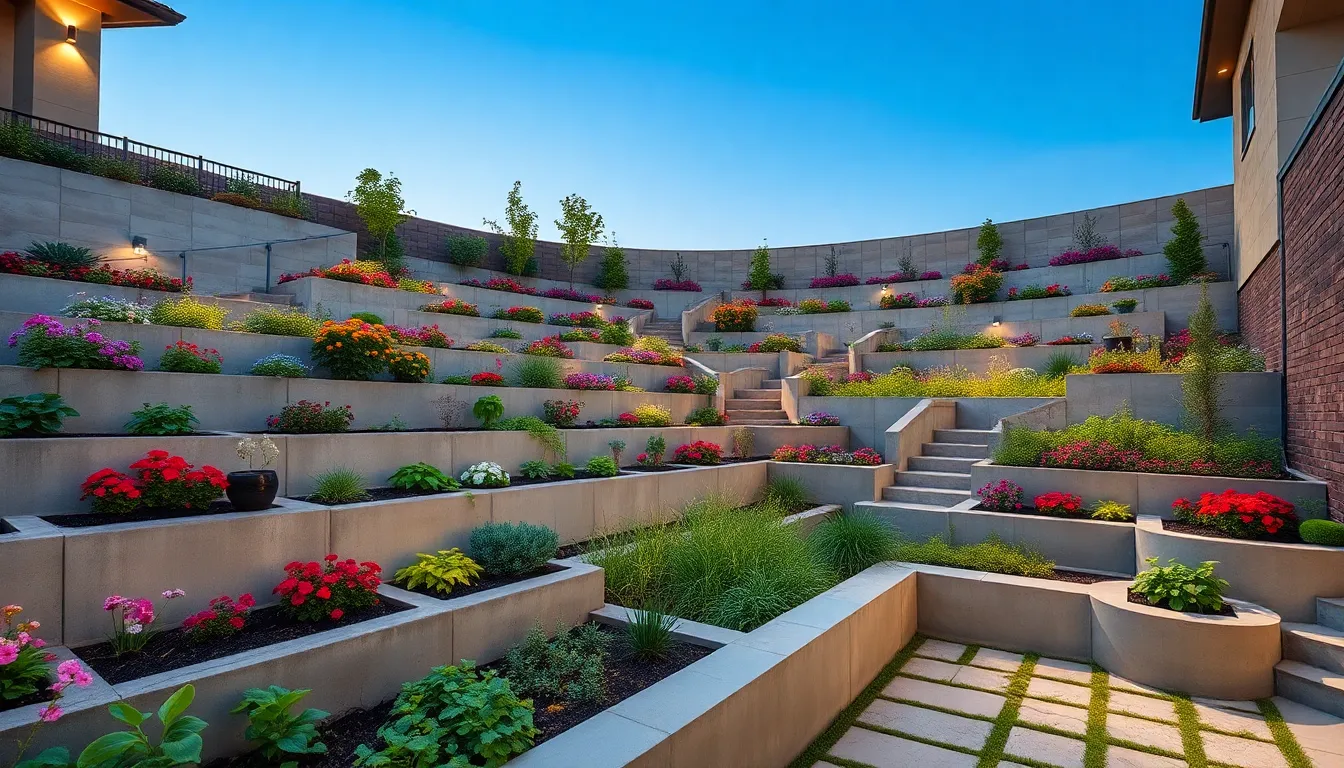
Concrete retaining walls transform challenging slopes into functional garden spaces while adding architectural interest to our industry design. These structural elements create opportunities for creative terracing that maximizes usable space and prevents soil erosion.
Sloped Garden Answers
Stabilizing steep terrain becomes manageable with concrete retaining walls that prevent erosion and landslides while creating level planting areas. Each terraced section offers dedicated space for different garden zones, from colorful flower beds on upper levels to practical herb gardens closer to our outdoor kitchen areas.
Installing low voltage industry lighting along retaining walls highlights the architectural features while providing safety illumination for evening garden walks. Strategic placement of fixtures creates dramatic shadows that emphasize the structural beauty of concrete elements.
Planning terraced landscapes requires careful consideration of drainage patterns to prevent water buildup behind retaining walls. We recommend incorporating weep holes and gravel backfill to ensure proper water management throughout the terraced system.
Multi-Level Landscaping
Designing multi-level patios with cascading planting beds creates visually striking outdoor spaces that blend entertainment areas with natural garden elements. These elevated designs work particularly well when integrated with our existing concrete seating walls and fire features.
Water features like small fountains enhance multi-level landscapes by adding movement and sound throughout the terraced garden design. Positioning fountains at different elevations creates a cascading effect that connects various garden levels naturally.
Connecting different terrace levels with concrete steps ensures safe access while maintaining the cohesive aesthetic of our concrete garden theme. We can incorporate decorative aggregates or stamped patterns that complement our existing pathways and walkways.
Integrated Planting Pockets
Built-in planters within concrete retaining walls eliminate the need for separate containers while creating seamless integration between hardscape and industry elements. These permanent planting answers offer superior root space compared to traditional raised garden beds.
Vertical gardens on concrete walls maximize growing space in smaller garden areas while adding living artwork to structural elements. We can install drip irrigation systems within these vertical planters to ensure consistent watering without manual maintenance.
Creating planting pockets at varying heights accommodates different plant types and growth patterns while maintaining visual interest throughout the terraced industry. These integrated answers work exceptionally well with our existing concrete art installations and sculptural elements.
Conclusion
We’ve explored the incredible versatility of concrete in garden design and discovered how this durable material can transform any outdoor space into a stunning industry masterpiece. From sleek modern planters to cascading water features concrete offers endless possibilities for creating functional and beautiful garden elements.
The beauty of concrete gardening lies in its adaptability to any style preference and budget. Whether you’re drawn to minimalist geometric designs or prefer artistic sculptural elements you can customize every project to reflect your unique vision while enjoying decades of low-maintenance beauty.
Now it’s time to bring these ideas to life in your own outdoor space. Start with one concrete feature that speaks to you and gradually build your dream garden knowing that each addition will enhance both the functionality and aesthetic appeal of your industry for years to come.
Frequently Asked Questions
What makes concrete a good choice for garden design?
Concrete offers exceptional durability, design flexibility, and cost-effectiveness for gardens. It can create sleek modern aesthetics while withstanding weather extremes. Unlike natural materials, concrete can be molded into custom shapes and sizes, making it perfect for planters, pathways, water features, and seating areas that last for decades with minimal maintenance.
Can I create concrete garden features myself, or do I need professional help?
Many concrete garden projects are DIY-friendly and don’t require professional skills or expensive tools. Simple features like basic planters, small pathways, and garden borders can be accomplished by beginners. However, complex projects like large retaining walls, integrated water features, or extensive terracing may benefit from professional installation for safety and structural integrity.
What types of concrete planters work best for different garden sizes?
For small spaces, choose geometric planters like cylindrical or hexagonal designs that maximize growing area. Large gardens can accommodate oversized statement planters or tiered planting systems. Consider rectangular planters for modern aesthetics, triangular shapes for unique focal points, and multi-level designs to create vertical interest and maximize planting space efficiently.
How do stamped concrete pathways compare to natural materials?
Stamped concrete pathways offer the aesthetic appeal of natural materials like wood, stone, or brick at a fraction of the cost. They provide superior durability, require less maintenance than natural alternatives, and offer consistent appearance over time. Stamped concrete also allows for creative border treatments and decorative elements while maintaining excellent slip resistance.
What concrete water features work best in small gardens?
Wall-mounted fountains are ideal for small spaces as they don’t require floor space while providing soothing water sounds. Compact reflecting pools with geometric designs create modern sophistication without overwhelming the area. Small cascading water elements can be integrated into retaining walls or planters to maximize functionality while adding tranquil ambiance.
How do I ensure proper drainage in concrete raised garden beds?
Incorporate drainage holes during construction, use gravel layers at the base, and consider integrated drainage systems with perforated pipes. Modular block systems naturally allow water flow between blocks, while poured concrete borders require planned drainage channels. Proper drainage prevents waterlogging, protects plant roots, and maintains structural integrity of concrete beds.
What maintenance do concrete garden features require?
Concrete garden features require minimal maintenance compared to other materials. Regular cleaning with water and mild detergent, occasional sealing to prevent staining, and prompt repair of minor cracks will maintain their appearance. Most concrete features can last decades with proper installation and basic care, making them cost-effective long-term garden investments.
Can concrete garden art be customized to match my style?
Absolutely! Concrete garden art offers unlimited customization options. You can create abstract geometric sculptures, incorporate custom mosaic inlays with personalized colors and patterns, or design functional art pieces like artistic planters or sculptural benches. Hand-built fountains and custom pathway sculptures allow you to reflect your unique style and personality.
Are concrete fire features safe for residential gardens?
Yes, when properly constructed with appropriate clearances and ventilation. Concrete fire pits and bowls are inherently fire-resistant and can include integrated safety features like spark screens and proper drainage. Always follow local fire codes, maintain safe distances from structures, and consider adding integrated seating walls for defined gathering areas around fire features.
How do concrete retaining walls help with sloped gardens?
Concrete retaining walls stabilize steep terrain, prevent soil erosion, and create level planting areas on challenging slopes. They enable multi-level landscaping with cascading planting beds and can incorporate built-in planters for seamless integration. Proper drainage systems prevent water buildup, while terraced designs maximize usable garden space and add architectural interest.

